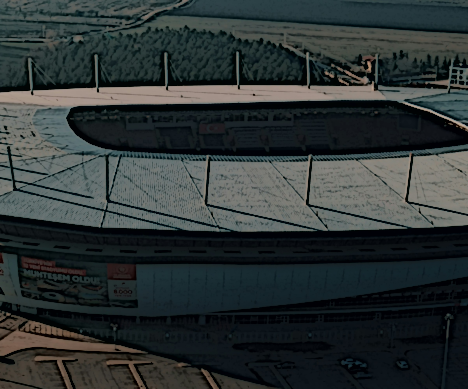The Arena
A large hockey arena and concert venue citizens in the surrounding town fled to when the initial bombs fell. It was home to around 4500 survivors for approximately 4 months, those who fled going on to build Willowmoor hundreds of miles away.
Purpose / Function
The arena's original purpose was as a concert venue, though it eventually expanded to include a hockey rink for the local college hockey team. Once the bombs demolished the city, it became a refugee sanctuary for local survivors, hiding them from enemy aircraft and providing shelter during the winter months.
Entries
The arena had two sets of three double doors - a main entrance on the east side of the building, and a back exit on the west side of the building. There were various fire escapes on ground level, as well as a door to the roof.
All fire exits and the door to the roof were barred for the safety of the arena residents, as well as to keep someone from accidentally giving away their position via the roof. The two large bays of doors on the ground floor were protected by armed guards who would only allow members of the Advisory Council to come and go as they please, those folks having experience with what lay beyond the arena's borders.
Even the main sets of doors were kept locked via alarm; the guards were equipped with small silver keys used to disarm the alarms.
Sensory & Appearance
The arena felt like any other space set aside for refugees during a climate emergency or natural disaster. The light inside was muted since it all came from backup generators with no windows. There was no heating with the main power down, but the presence of so many warm bodies kept the temperature between comfortable and stuffy. Unfortunately, the amount of people also contributed to the pungent smell as the scent of body odor mixed with the stale arena air. Common sounds included the clatter of something being dropped on the concrete floor, the dull thrum of many conversations happening at once, and occasional shouts of laughter or screams of impertinence from the children.
Contents & Furnishings
In the immediate aftermath of the initial bombs, the military and its associated disaster relief still functioned normally and were able to deliver cots and bottled water to the arena. The cots took up a lot of space within, but there still remained existing furnishings from when the place functioned as a concert venue and sports stadium
Alterations
When it became apparent that the military would not return, nor would the government show up to save everyone, the Leadership Council issued orders to reinforce the arena's protection. This involved hammering sheets of plywood to the roof as well as installing an aircraft censor via the technological genius of Cleo.
Architecture
The arena sat just off the interstate in the shadow of the southern side of the mountain range. It stood out there, large and looming, silver and rounded, totally unique to the surrounding shopping strips and nearby neighborhoods.
The arena still stands to this day, nature beginning to reclaim it as it has done the area that surrounds it.
History
The Arena became the only shelter for miles around that survivors of the initial bombing campaign could flee to. Though it only survived as such for four short months, future generations in the area would leave it standing to show the resilience of the original community of Willowmoor, who fled from there to build their humble village in the safety of the far north.
Image: unsplash
3/1/1



Comments